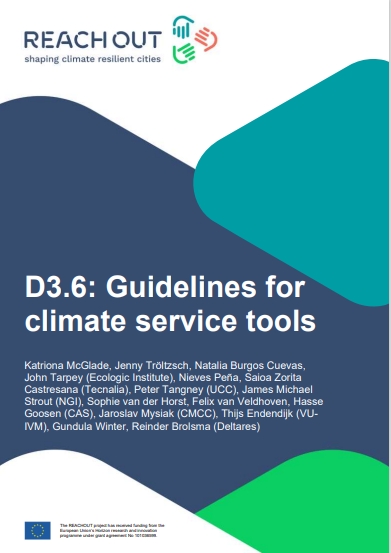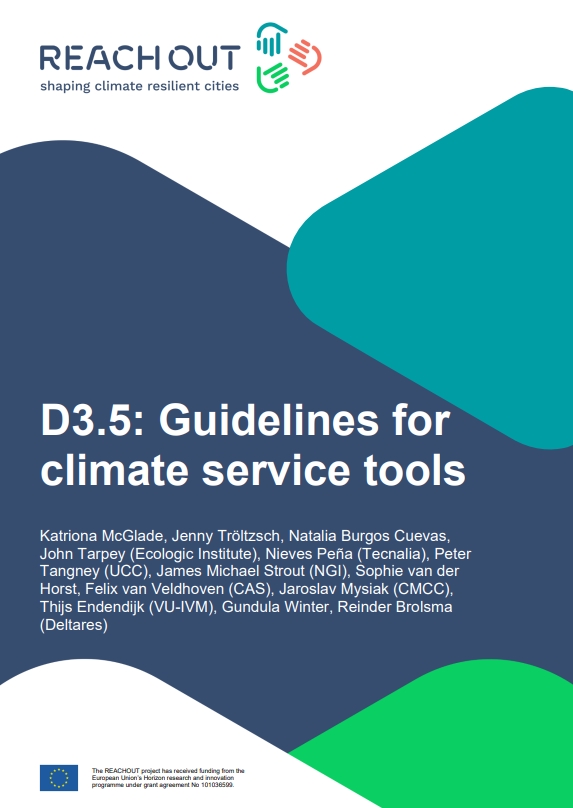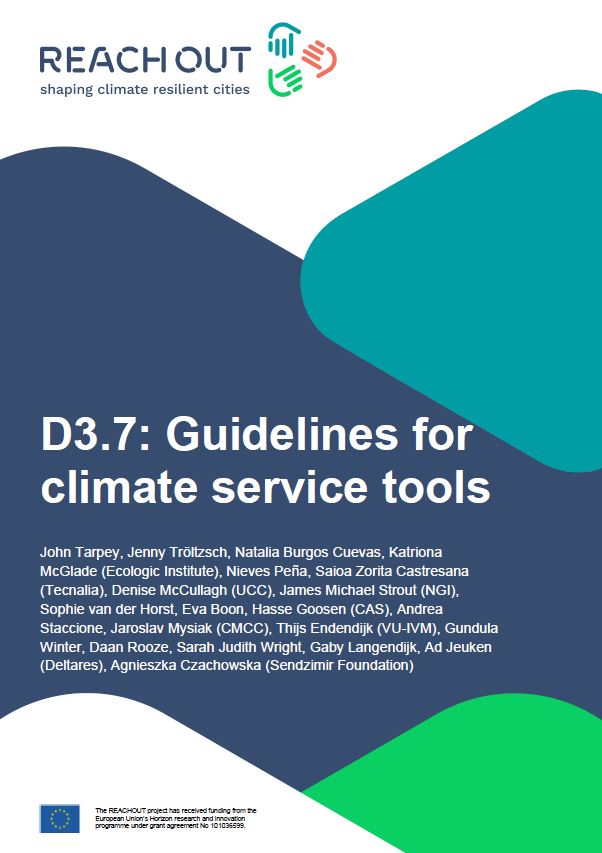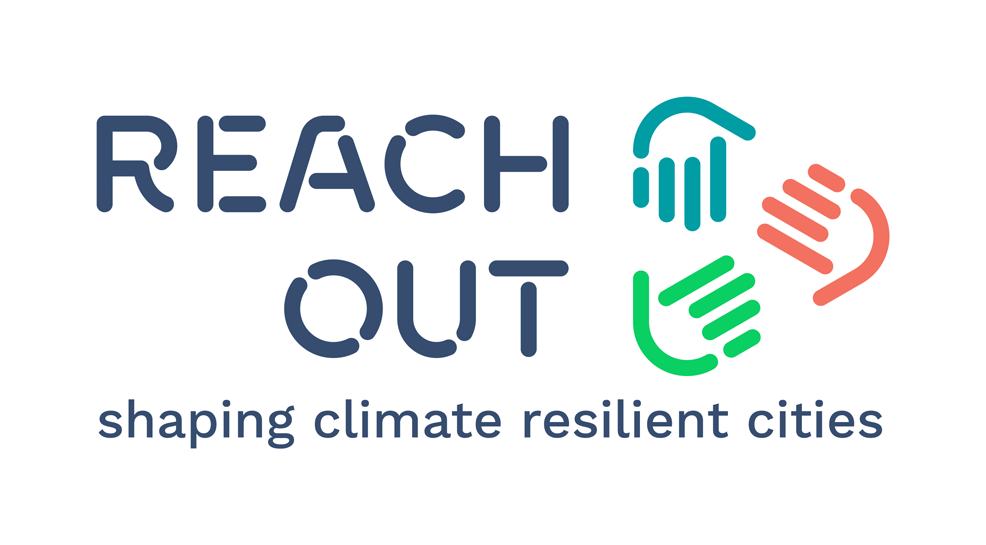Guidelines for Climate Service Tools
Deliverable 3.6 of Horizon 2020 project REACHOUT
- Publication
- Citation
McGlade K.; Tröltzsch J.; Burgos Cuevas, N.; Tarpey, J., Peña, N.; Castresana S.Z.; Tangney P.; Strout, J.M.; van der Horst, S.; Van Veldhoven F.; Goosen H.; Mysiak, J.; Endendijk, T.; Winter, G.; Brolsma R. (2025). D3.6 Guidelines for climate service tools. Deliverable of Horizon 2020 project REACHOUT.
As part of the EU-funded REACHOUT project, the updated D3.6 Guidelines for Climate Service Tools represent an important milestone in developing and refining climate services for urban adaptation. This deliverable builds upon earlier work (D3.5) and presents an extended set of over 15 climate service tools, designed to support European cities in planning and implementing climate resilience strategies. Structured around the Triple-A framework–Analysis, Ambition, and Action – the report emphasizes the practical use of tools in real-world urban contexts.
A Diverse Portfolio of Tools and Methods
The toolkit introduced in D3.6 includes both technical and participatory instruments: from tools that model urban flood and heat risks (e.g. Pluvial Hazard Tool, Thermal Assessment Tool), to decision-support systems like FloodAdapt and the Climate Resilient City Tool (CRCTool), which guide planning and prioritization of adaptation measures. In addition, participatory methods such as Crowdsourcing Modules, Climate Stories, and Impact Diagrams help engage local communities and stakeholders in the adaptation process.
Strong Emphasis on Co-Creation and Usability
A defining feature of this development cycle is the close collaboration with seven City Hubs, including cities like Milan, Athens, Cork, and Logroño. Their practical experiences have helped to test, customize, and improve the tools. Each tool is assessed based on its technical complexity, data requirements, and suitability for use by both experts and non-specialists. This user-centered, co-creative approach ensures the tools remain accessible, context-sensitive, and ready to be scaled up.
Interoperability and Integration Potential
D3.6 places particular emphasis on the interlinking potential between tools. Many applications can be used in combination – for example, integrating hazard models with social vulnerability assessments, or using crowdsourced data to validate spatial risk maps. The report also classifies tools by readiness level (ready-to-use, requires customization, under development), allowing cities to identify suitable entry points based on their capacity and needs.
Looking Ahead: Laying the Groundwork for Digital Uptake
With the D3.6 guidelines, REACHOUT sets a strong foundation for the upcoming final phase (D3.7), which will further refine the tools and translate them into a web-based Triple-A Toolkit platform. This publication not only provides detailed guidance for implementation but also supports the broader ambition of mainstreaming climate adaptation through user-friendly, science-based tools tailored to the evolving challenges of urban resilience.







